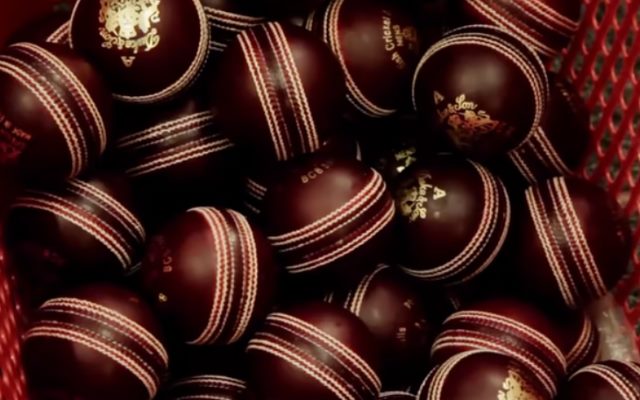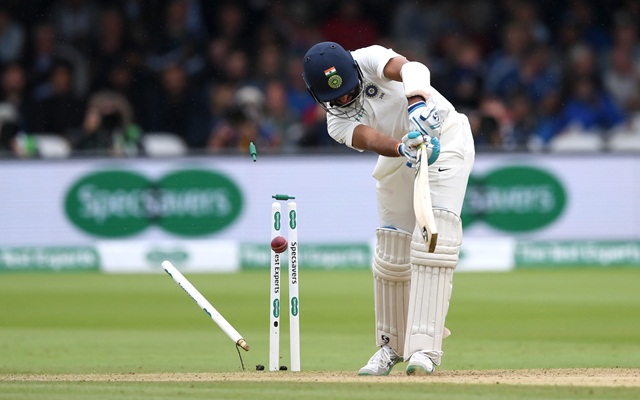They make music with leather to win you Test matches
It takes more than just one ball to take a wicket.
7 Min Read


We all crave stories, don’t we? Just like a mother weaves a sweater for her newborn, cricket has been intertwining the tales and glory of the sport since time immemorial. Recently we all witnessed a brand new yarn of Test match unveiling at the Mecca of cricket which we will probably cherish for a long time.
And there are absolutely no rewards to guess the lead characters of the story. They are the ones who create music with the leather. Okay, let’s end the puzzle here. The characters respond to the names of Jasprit Bumrah, Mohammed Shami, and Mohammed Siraj. In some other parts of the world, Kemar Roach and Jayden Seales did the job for West Indies. And this bunch of characters brought back the attention of many to ‘Cricket’s First Act-Bowling.’
The precious commodities of India
The rain played its part in the first Test match between England and India and the contest between the bat and the ball had to be paused. We the fans never like the fact when the weather has its say but if it all gets compensated like the way it did on the final day at Lord’s, then we have just one thing to say, ‘Test cricket, you beauty!’ As a proper Test cricket fan, my nerves turned into steel when Rory Burns and Dom Sibley walked the field. A win for India was a rare sight. Though eyes couldn’t spot it then, the heart hoped for it.
Mohammed Siraj in his typical way entered the scene with his many moods. Since his debut against Australia, he is been making his way into the best fast bowling group. Jasprit Bumrah on the other hand is the name that skipper Virat Kohli has pinned his trust on. There goes the tale, three wickets for Bumrah, four for Siraj…A spirited Captain and a quality pace attack, clinching a historic win at the Home of Cricket.
It takes more than just a ball to take a wicket…

“I will just tell you one thing — to win a Test match, you need 20 wickets and we (India) did that. So that’s the only answer I would give because it doesn’t matter how well you bat, how well you are there for five days but (by) taking 20 wickets, you can win a Test match,” India’s former skipper Mahendra Singh Dhoni had previously stated. Of course, he was not the first one to say this, and I bet you, he wouldn’t be the last either. Because it is true. It is simple but true.
While I was watching the second Test, and India needed three wickets to win, I heard the commentator say ‘India, are just three good balls away from victory’. That made me ponder, is it easy or is it not? Three wickets seem quite big but when one says three good balls the equation looks simpler. But it isn’t. Bowling is probably an act of pure creation. Use of swing, varying the pace and bounce, and making the most of the conditions are all the things that go behind bowling a single delivery.
In red-ball cricket, we talk about the resilience of the batters. But have we ever pushed our luck enough to relate these terms with bowlers? Bouncing back stronger in the third Test against India, England outplayed the visitors. James Anderson, Craig Overton, and Ollie Robinson displayed all the patience to stick to their plans and bowled India out for 78 runs in the first innings to fashion England’s dominating comeback in the series.
In the inaugural final of the World Test Championship, it was the bowlers who gave the uppercut to the Kiwis. Kyle Jamieson stood tall like a wall in the way of the Indian batters wherein he bowled 22 maiden overs and picked up 7 wickets in the match. When Kane Williamson put his arms across Ross Taylor and walked back with victory, the cricket onlookers savored the scenario. But it came after the likes of Neil Wagner, Trent Boult, Tim Southee and Jamieson displayed their mettle.
‘Wickets’ – The recipe for success in Test match cricket

Gathering big runs and putting up a strong total on the board is important. But ain’t it equally crucial to go on and defend it in front of an opposition that probably has the behemoths of batting? Thinking of wickets all the time and sticking to their line and lengths, the bowlers strive hard to break the defense of a well-set batter.
Often we dive deep into the stats and numbers of batters in home and away Tests. Now, let’s have a look at what impact some of the most consistent bowlers in Test have had in influencing the fate of their respective teams in home and away Test matches while the team won or when it was a draw.
Muttiah Muralitharan is probably the greatest to have ever spun the ball. Having played 133 Tests, Sri Lanka’s bowling messiah has 800 wickets under his sleeves. When at home, his numbers are staggering as he has picked up 412 wickets in the 59 matches that resulted in a win or draw for Sri Lanka. In the away games, he has scalped 178 wickets in just 32 matches when the team either walked out with a triumph or a draw. Muralitharan is one of his kinds, a league of his own and numbers shows that playing him at home wasn’t an easy equation to solve.
James Anderson does not just make the duke balls sing in English conditions, but he makes sure that everybody remembers the song as well. 165 Test matches, 630 wickets, and an elusive consistency are some of the elements of his story. In the case of wins or draws, in 72 matches at home, Anderson has grabbed a whopping 334 wickets and overseas he has 132 wickets in 35 games.
Ravichandran Ashwin always seems on a constant quest to better his abilities with the ball. He already has ample variations under his sleeves to grab a win from the jaws of defeat but he doesn’t mind adding more under his belt. At times when India has either won or pulled a draw, Ashwin’s numbers in Tests read- Matches at home – 42, wickets – 263; Matches away – 17, wickets – 74.
These are just a few names of the many.
To sum things up…..
While we recollect the fond memories of the Kolkata Test, VVS Laxman, and Rahul Dravid pop up in our minds. Harbhajan Singh’s hattrick and his 13 wickets in the match they say was the icing on the cake. Though there is no doubt that the batters lit up the Edens and fashioned a historic win, in the second innings, Harbhajan bowled 30.3 overs, picked 6 wickets, and helped India halt Australia’s record-winning streak at 16.
The question is not about what is more superior or important. You cannot ask a father which son is more important to you. It is just about understanding the impact. The bowlers bend their backs to produce wicket-taking deliveries. They feel overwhelmed when the new cherry moves. It is believed that the greatest of the teams are built around versatile bowlers.
When the team picks up 20 wickets in a Test match, the team wins. If the bowlers are taken care of rest will follow. In red-ball cricket, the challenge is tough for both the batters as well as the bowlers. In today’s era where the bowlers are closely been video-analyzed by oppositions, they are in a constant race to bring in new additions to their bowling and execution. But they are finding the ways out of the maze to win you Test matches, ain’t they?
Download Our App